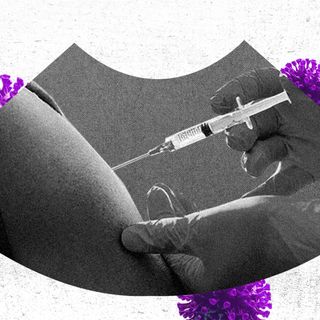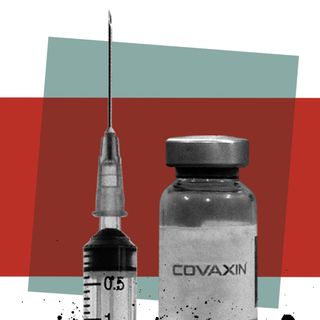
All You Need To Know About Psoriasis
The autoimmune condition triggers rapid buildup of skin cells — causing red patches across the body.

The skin is the largest organ in the body — it protects the body from trauma and serves other functions like regulating body temperature. Psoriasis is an autoimmune condition that impacts the skin, presenting itself as red, scaly patches that affect different body parts.
Psoriasis occurs when the immune system attacks healthy skin tissue, but little is known about why this happens.The condition can affect people of any age, and is considered equally prevalent among men and women.
The World Health Organization categorizes psoriasis as a serious global problem that affects at least 10 million people worldwide. Psoriasis is widely considered to be the most stigmatized of all skin disorders.
Researchers and patients with psoriasis point out that misconceptions about the condition decrease the quality of life for people, and note that more awareness is needed on the subject. This has led to initiatives like the “Get Your Skin Out Movement” and similar body-positive campaigns to understand how psoriasis affects people.
What is psoriasis?
Psoriasis is a long-term condition that presents itself most commonly as a rash on the skin. The most common areas affected by psoriasis include the scalp, knees, and elbows — but other parts of the body such as the ears and neck can also be affected. As an autoimmune skin condition, it is the result of an overactive immune system. It causes the skin cells to multiply up to 10 times faster than normal — making the skin build up into bumpy red patches. For some people, these patches itch, burn, and sting. Inflammation caused by psoriasis is also known to impact other organs and tissues in the body.
The WHO recognizes psoriasis as a condition attached with a lot of stigma, thereby associated with a decreased quality of life. People who suffer from psoriasis are at risk of developing mental illnesses such as depression. There are also a range of other associated illnesses such as Inflammatory Bowel Disease (IBD), cardiovascular disease, diabetes, and others.
While the condition is not contagious, there is currently no permanent cure.
Who is at risk of psoriasis?
While not much is known about what causes psoriasis, environment and genetics play a role in determining who is more vulnerable. Common risk factors include family history, smoking, and stress — the latter two are associated with weakened immune systems, and therefore may make one more susceptible to developing the autoimmune condition.
Psoriasis usually presents itself in early adulthood, but people of all ages, skin colors, and genders can experience it.
Related on The Swaddle:
All You Need To Know About Alopecia
What are the symptoms of psoriasis?
Plaque psoriasis is the most common type of psoriasis. The condition occurs in “cycles,” or flare-ups, of a rash. The average period between each flareup can be anywhere between one to 12 months. Flare-ups usually come with the following symptoms:
- Red, inflamed skin patches
- Scaly appearance on the red patches
- Dry skin which cracks or bleeds
- Itching, burning, or soreness around the patches
- Swollen and painful joints
There are, however, other types of psoriasis which affect other parts of the body. They have their own symptoms:
- Nail psoriasis, which can cause nails to crumble in severe cases and is characterized by abnormal nail growth
- Psoriatic arthritis, when the joints are inflamed and painful, sometimes leading to permanent joint damage. One in three people with psoriasis may develop arthritis
- Guttate psoriasis, which mostly occurs in children and is triggered by bacterial infections such as strep throat (sore, scratchy throat). This is characterized by drop-shaped lesions in the arms, legs, or trunk
- Pustular psoriasis, which manifests as pus-filled lesions on the palms or feet
- Inverse psoriasis, which is triggered by fungal infections and is associated with red patches in the folds of skin near the groin, buttocks, or breasts, which worsen with friction
- Erythrodermic psoriasis is a severe form of the condition which generally covers large areas of the body and is associated with sheets of skin peeling off. It causes a burning or itching sensation.
What causes psoriasis?
As an autoimmune condition, psoriasis is triggered when the immune system mistakes cells of the body as external harmful agents such as bacteria or viruses, and mounts a response against them. The immune system causes inflammation, which in turn triggers faster cell growth. So while healthy skin cells shed and grow every 28-30 days, people with psoriasis experience skin cell growth every 3-4 days. When the skin grows faster than it is shed, the cells build up to form the red scaly appearance which is visible on the skin surface.
Psoriasis is often triggered by certain immune-related or external factors. Triggering events include infections, injuries, and changing lifestyle habits that may impact the immune system, leading to the onset of symptoms.
External elements include skin or throat infections, cold or dry weather, skin injuries, stress, smoking, high alcohol consumption, and certain medications.
Can psoriasis be treated or cured?
Although there is no permanent cure for psoriasis, treatment options exist to manage symptoms and reduce the risk of other associated diseases. Topical treatments in the form of applying medication on the skin, through ointments and creams, help slow down cell reproduction and inflammation.
Phototherapy is another strategy, in which doctors use artificial Ultraviolet B (UVB) light to slow the growth of skin cells. Other therapies that focus on making diet and lifestyle changes are also a way of treating the condition — although their success varies from person to person.
Rohitha Naraharisetty is a Senior Associate Editor at The Swaddle. She writes about the intersection of gender, caste, social movements, and pop culture. She can be found on Instagram at @rohitha_97 or on Twitter at @romimacaronii.
Related


Vaccinate Pregnant Women, New Mothers To Address Rising Covid19 Cases: ICMR
